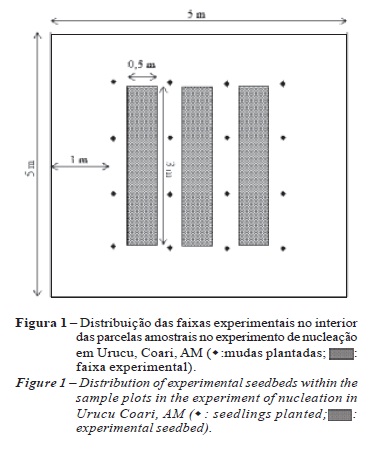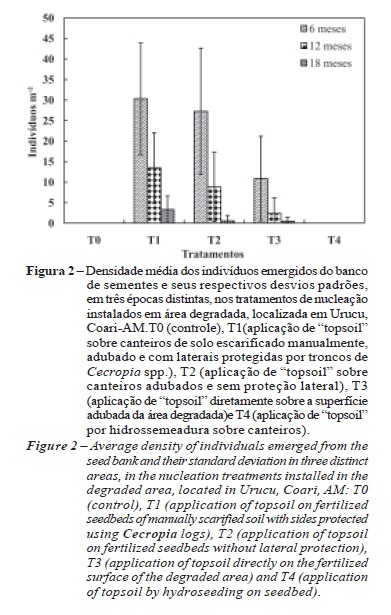Oil exploration in the Amazon generally results in the creation of clearings. The traditional planting of tree seedlings in these remote degraded areas uses air and river transport of machinery and supplies resulting in a very expensive restoration process. To develop low cost nucleation techniques based on the application of locally available natural elements, allowing the natural regeneration of pioneer tree species, 5 treatments with 5 replicates, distributed in a 25 x 25 m Latin square, were tested, in the region of Urucú, Amazonas: T0 (control), T1 (application of topsoil on fertilized seedbeds of manually scarified soil with sides protected using Cecropia logs), T2 (application of topsoil on fertilized seedbeds without lateral protection), T3 (application of topsoil directly on the fertilized surface of the degraded area) and T4 (application of topsoil by hydroseeding on seedbed). The effects on apparent density and soil fertility, as well as on the density and growth of emerged seedlings, were evaluated. After 18 months, the T1, T2 and T3 treatments resulted in the establishment of 3, 1 and 1 individuals m-2, respectively, with similar heights, originating from the topsoil. The T0 and T4 treatments had no seedling emergence. The soil density was higher in treatments (>1.3 g cm-3) compared to the forest (0.95 cm-3). While the application of fertilizer and limestone promoted an increase in the soil fertility in the treatments, the levels of nitrogen and organic matter were higher in the forest.
Ecological restoration; Impact mitigation; Soil seed bank





